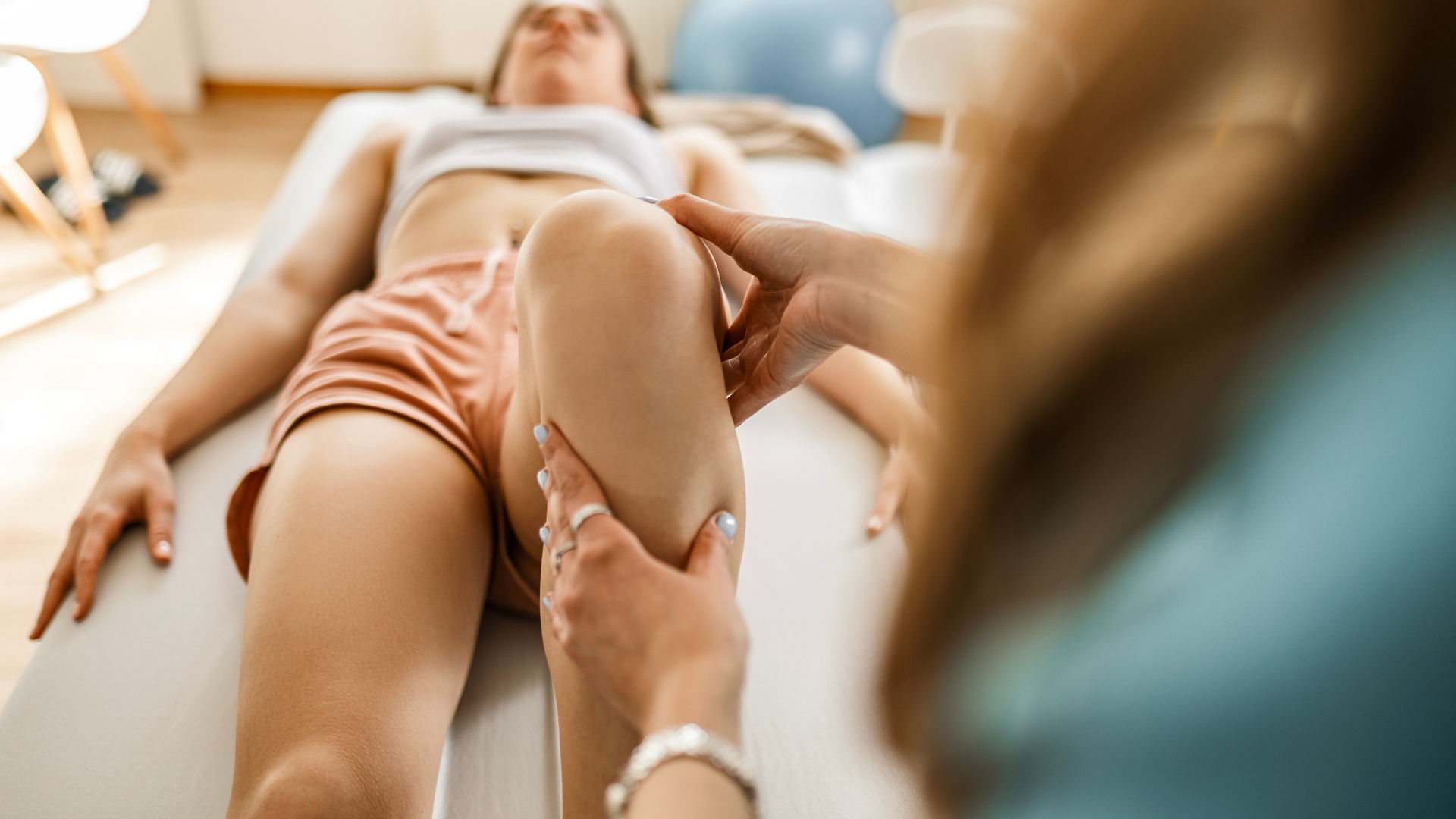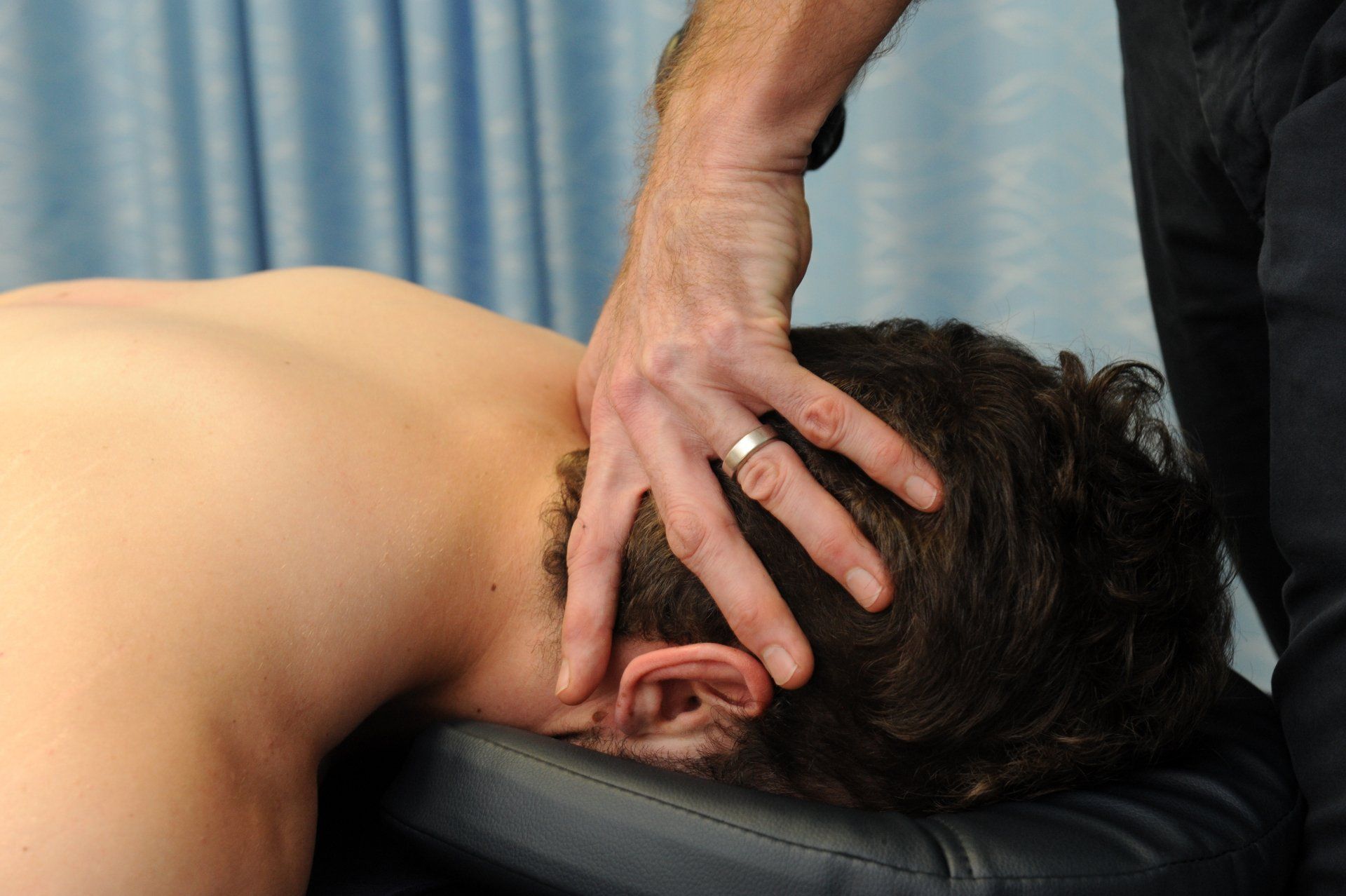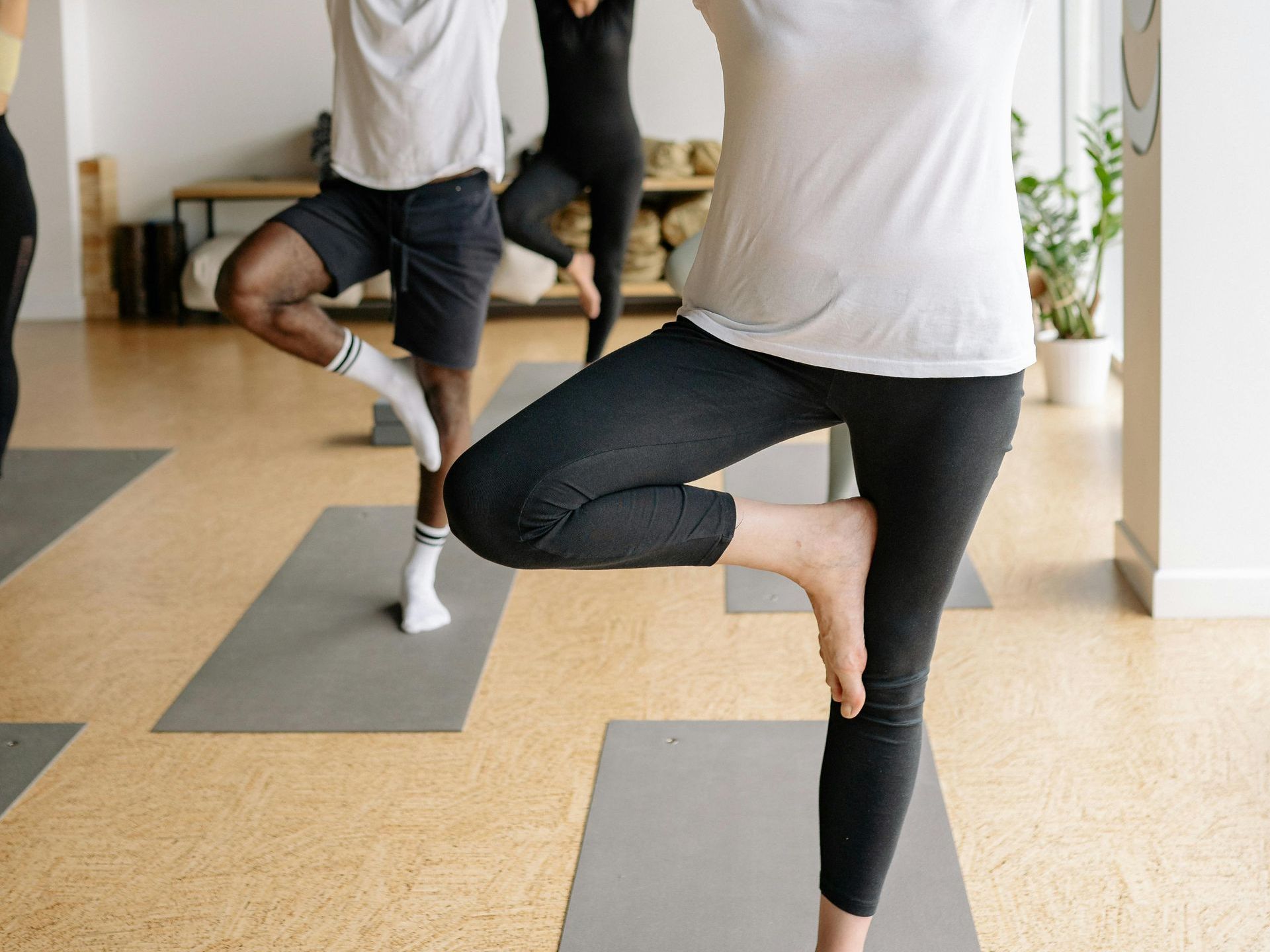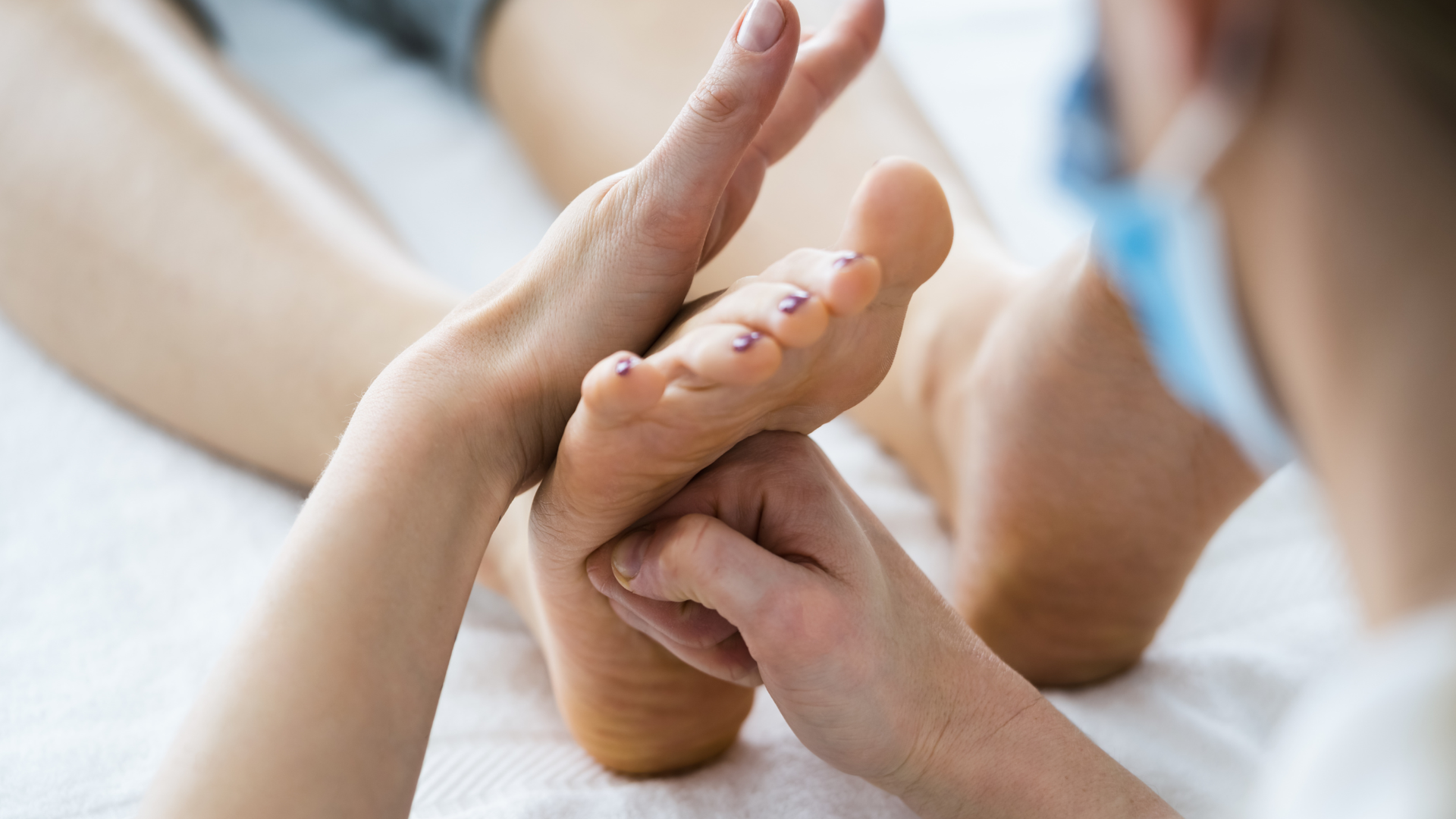The Foot - Plantar Heel Pain
Heel pain that won't quit? Why starting physiotherapy early matters.

Try these low impact exercises for mild heel pain
Try these low impact exercises for mild turf toe
Plantar heel pain is one of the most common causes of pain in the foot, particularly for people who spend a lot of time on their feet or who enjoy participating in running sports. For years it was called “plantar fasciitis,” (pronounced fa-shee-ai-tuhs, which translates to inflammation (-itis) of the fascia), but research now shows it’s often more complex than simple inflammation. Persistent heel pain can affect your walking, running, and daily life — but early physiotherapy can make a big difference in recovery.
Anatomy 101
The heel is supported by the plantar fascia, a strong band of tissue running from the calcaneus (heel bone) to the base of your toes. It acts like a shock absorber and maintains the arch of your foot, particularly from mid-stance to toe off during walking and running.
The plantar fascia has a rich nerve input and a limited blood supply, which means it can cause sharp, disabling pain and be slow to heal.
Every step loads this structure, so even small injuries or tissue changes can have a big impact on day-to-day function.
I heard of this under another name?
Traditionally called plantar fasciitis, we now know most cases involve degenerative changes rather than inflammation or specific structural changes, so “plantar heel pain” is a more accurate description when describing this condition. Other names you might hear include:
- Heel spur syndrome
- Policeman’s heel
- Jogger’s heel
These terms can be misleading — for instance, heel spurs are often present in people without pain, and heel pain is not exclusive to law enforcement personnel or joggers. “Plantar heel pain” better reflects what’s actually happening in your foot.
Who gets it?
Heel pain affects a wide range of people.
It is estimated that up to 10% of the population will experience plantar heel pain at some point in their lifetime, and it accounts for 25% of all foot disorders in athletes.
Risk factors for plantar heel pain include:
- Middle aged Adults (40-60), but active younger populations can also be affected
- Jobs with long standing or walking hours
- Runners and athletes with sudden training increases
- Flat feet (pes planus) or very high arches (pes cavus)
- Weight gain or being overweight
- Darwin footwear (Thongs & Barefoot)
Diagnosing Plantar Heel Pain
Diagnosis of plantar heel pain is primarily based on clinical findings, something physiotherapists are well trained to assess. Symptoms can include heel pain when weight-bearing after a period of non-weight bearing (eg. first thing in the morning), pain that eases with initial activity then increases with further use, and pain after prolonged standing, walking or jogging.
Signs related to plantar heel pain include:
- Tenderness at the heel’s inner edge & along plantar fascia
- Pain when stretching the toes upward
- Weakness in calf or foot muscles
- Pain proportional to loading the plantar fascia
Other conditions the physiotherapist will want to rule out include stress fractures, nerve entrapment, fat pad atrophy, tarsal tunnel syndrome, or systemic inflammation. Tests like the Windlass test can confirm plantar fascia involvement in heel pain presentations, but it’s important to have a health professional diagnose you correctly to ensure you get the best treatment.
Do I need a scan?
Most people don’t need imaging. Ultrasound or MRI is reserved for unusual or chronic presentations. X-rays may reveal heel spurs, but these are usually incidental and not the true source of pain.
Treatment
Physiotherapy is the first-line treatment and there is good evidence for its effectiveness. Treatment strategies include:
- Load management: Adjust activity to the load going through the plantar fascia while staying active
- Stretching & manual therapy: Relieve stiffness in the fascia and calf
- Strengthening exercises: Calf raises and intrinsic foot exercises support the foots arch
- Taping or orthotics: Temporary support to reduce pain while walking
- Hydrotherapy: Gentle water-based exercise to maintain fitness and reduce load
Other second-line interventions with lower quality evidence include the use of anti-inflammatories for short-term pain relief and shockwave therapy. Massage guns are not recommended as they have no effect on the underlying causes of heel pain.
Do I need surgery? What about an injection?
Cortisone (steroid) injections and surgery for heel pain are rarely indicated and reserved for those with persistent pain that has been resistant to conservative treatment strategies.
How long’s it going to take?
Recovery depends on early intervention and strict adherence to a rehabilitation plan. Mild cases often improve in 6–8 weeks, while chronic or severe cases may take 3–6 months. Consistent exercise, load management, and physiotherapy guidance are key to a faster recovery.
The Take Home
Heel pain isn’t just a minor irritation — it’s a condition that can limit walking, running, and daily life if left unmanaged. Early assessment, diagnosis, and physiotherapy-focused rehabilitation are crucial. With the right plan, most people can reduce their pain and return to the activities they love.
Got heel pain and want to get it sorted? Give us a call today.
Got heel pain and want to get it sorted? Give us a call.
At Movement for Life Physiotherapy, we can assess your heel pain, identify whether it’s plantar heel pain or another condition. With a clear diagnosis and tailored management plan, we’ll help get you back on your feet sooner.
📞 Call us now or click BOOK AN APPOINTMENT to book online.
References
- Babatunde, O. O., Legha, A., Littlewood, C., Chesterton, L. S., Thomas, M. J., Menz, H. B., ... & Roddy, E. (2019). Comparative effectiveness of treatment options for plantar heel pain: a systematic review with network meta-analysis. British journal of sports medicine, 53(3), 182-194.
- Koc, T. A., Jr, Bise, C. G., Neville, C., Carreira, D., Martin, R. L., & McDonough, C. M. (2023). Heel Pain - Plantar Fasciitis: Revision 2023. The Journal of orthopaedic and sports physical therapy, 53(12), CPG1–CPG39. https://doi.org/10.2519/jospt.2023.0303Landorf, K. B. (2015). Plantar heel pain and plantar fasciitis. BMJ clinical evidence, 2015, 1111.
- Martin, R. L., Davenport, T. E., Reischl, S. F., McPoil, T. G., Matheson, J. W., Wukich, D. K., ... & Godges, J. J. (2014). Heel pain—plantar fasciitis: revision 2014. Journal of Orthopaedic & Sports Physical Therapy, 44(11), A1-A33.
- Morrissey, D., Cotchett, M., Said J'Bari, A., Prior, T., Griffiths, I. B., Rathleff, M. S., Gulle, H., Vicenzino, B., & Barton, C. J. (2021). Management of plantar heel pain: a best practice guide informed by a systematic review, expert clinical reasoning and patient values. British journal of sports medicine, 55(19), 1106–1118. https://doi.org/10.1136/bjsports-2019-101970
- Riel, H., Cotchett, M., Delahunt, E., Rathleff, M. S., Vicenzino, B., Weir, A., & Landorf, K. B. (2017). Is 'plantar heel pain' a more appropriate term than 'plantar fasciitis'? Time to move on. British journal of sports medicine, 51(22), 1576–1577. https://doi.org/10.1136/bjsports-2017-097519
- Rosenbaum, A. J., DiPreta, J. A., & Misener, D. (2014). Plantar heel pain. Medical Clinics, 98(2), 339-352.
- Salvioli, S., Guidi, M., & Marcotulli, G. (2017). The effectiveness of conservative, non-pharmacological treatment, of plantar heel pain: a systematic review with meta-analysis. The Foot, 33, 57-67.
- Sullivan, J., Burns, J., Adams, R., Pappas, E., & Crosbie, J. (2015). Musculoskeletal and activity-related factors associated with plantar heel pain. Foot & ankle international, 36(1), 37-45.
- Sullivan, J., Pappas, E., & Burns, J. (2020). Role of mechanical factors in the clinical presentation of plantar heel pain: Implications for management. The Foot, 42, 101636.
- Sweeting, D., Parish, B., Hooper, L., & Chester, R. (2011). The effectiveness of manual stretching in the treatment of plantar heel pain: a systematic review. Journal of foot and ankle research, 4(1), 19.








